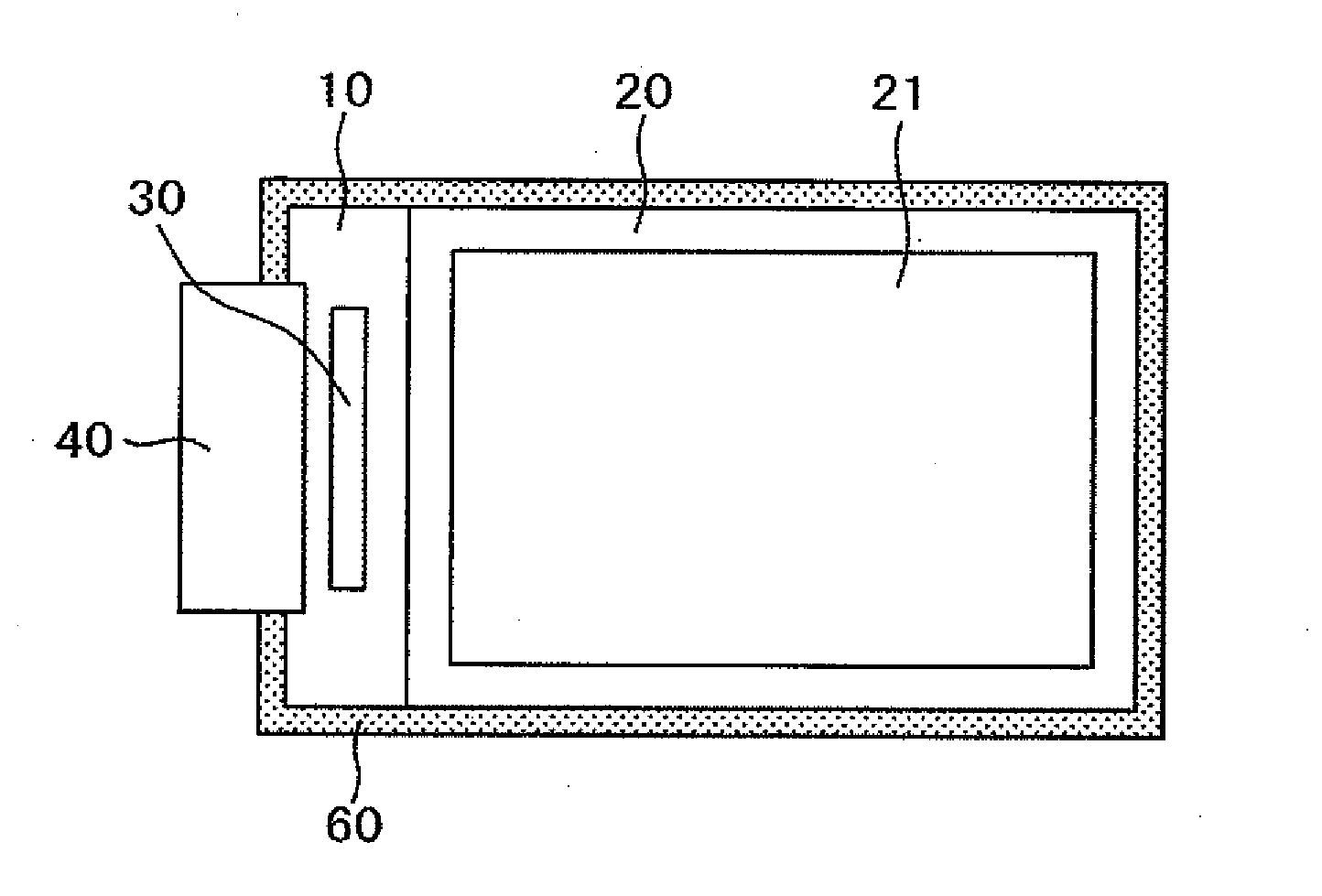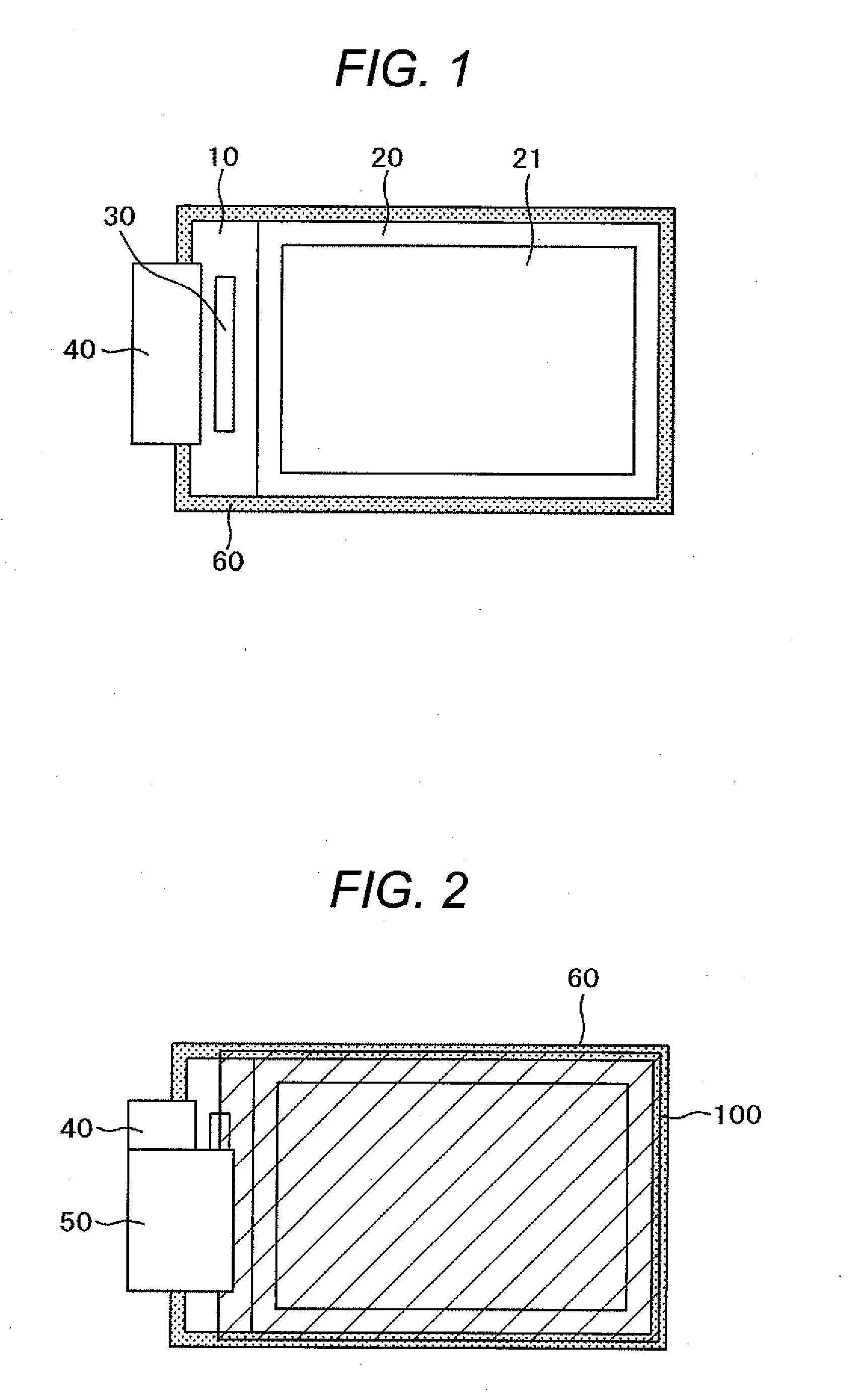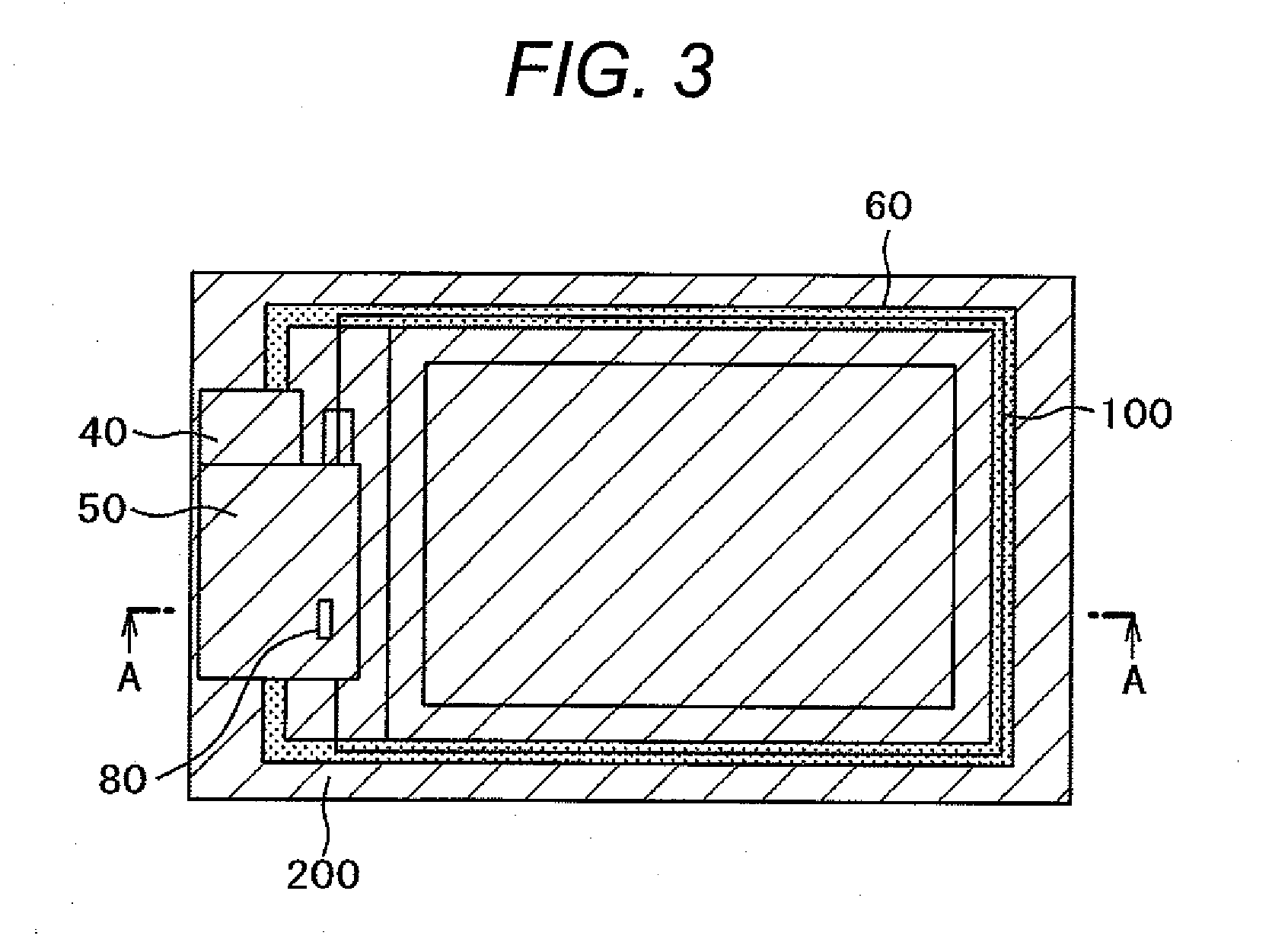Liquid crystal display device
a liquid crystal display and display panel technology, applied in the direction of static indicating devices, instruments, other domestic articles, etc., can solve the problems of mechanical strength problem, reduced thickness of liquid crystal display panels, and difficulty in obtaining such standardized glass substrates from a market, so as to achieve high reliability reduce the thickness of liquid crystal display devices
- Summary
- Abstract
- Description
- Claims
- Application Information
AI Technical Summary
Benefits of technology
Problems solved by technology
Method used
Image
Examples
first embodiment
[0034]FIG. 1 is a top view of a liquid crystal display device used for mobile phones or other electronic devices, according to the present invention. In FIG. 1, a color filter substrate 20 is mounted to a TFT substrate 10. A liquid crystal layer, not shown, is interposed between the TFT substrate 10 and the color filter substrate 20. The TFT substrate 10 and the color filter substrate 20 are bonded together with a sealing material, not shown, which is formed in the frame portion of the liquid crystal display panel. The TFT substrate 10 is made to be larger than the color filter substrate 20. A terminal portion is formed in the portion of the TFT substrate 10 extending beyond the color filter substrate 20, in order to supply power, image signals, scan signals, and the like.
[0035]An IC driver 30 is connected to the terminal portion to drive scan lines, image lines, and the like. The IC driver 30 includes a scan line drive circuit and an image signal line drive circuit. The IC driver 3...
second embodiment
[0070]When the light from the light emitting diode of the backlight is input to the logo 80 formed on the back side of the front window 200, a predetermined design quality may not be obtained in terms of the color or other optical characteristics of the logo 80. In order to prevent this, in the first embodiment, the thickness of the second layer 82 of the logo 80 is increased. However, the light shielding effect may not be sufficiently obtained in the first embodiment. In a second embodiment, a third layer 83, which is a light shielding film, is further formed on the second layer 82 for forming white or a predetermined color of the logo 80, in order to prevent the effect of the light from the light emitting diode.
[0071]FIGS. 8A, 8B, and 8C are cross-sectional views of the process of forming the logo 80 according to the second embodiment. FIG. 8A is a view in which the first layer 81 is formed on the back surface of the front window 200. FIG. 8B is a view in which the second layer 82...
third embodiment
[0078]In the first embodiment, the distance L between the end portion of the second layer 82 of the logo 80 and the end portion of the touch panel 100 is set to be greater than zero. In the second embodiment, the distance L between the end portion of the three layers of the logo 80 and the end portion of the touch panel 100 is set to be greater than zero. In the vicinity of the distance L of zero, the bending stress is large. If the relationship d12+d3 is established in FIG. 7 and other figures, there may be a peeling stress on the adhesive sheet 210 between the front window 200 and the touch-panel flexible wiring substrate 50.
[0079]A third embodiment deals with this problem. FIG. 10 is a detailed cross-sectional view around the logo 80 formed on the back surface of the front window 200 according to the third embodiment. In FIG. 10, the configuration below the touch panel 100 is omitted.
[0080]In FIG. 10, the touch-panel flexible wiring substrate 50 is mounted to the touch panel 100....
PUM
 Login to View More
Login to View More Abstract
Description
Claims
Application Information
 Login to View More
Login to View More - R&D
- Intellectual Property
- Life Sciences
- Materials
- Tech Scout
- Unparalleled Data Quality
- Higher Quality Content
- 60% Fewer Hallucinations
Browse by: Latest US Patents, China's latest patents, Technical Efficacy Thesaurus, Application Domain, Technology Topic, Popular Technical Reports.
© 2025 PatSnap. All rights reserved.Legal|Privacy policy|Modern Slavery Act Transparency Statement|Sitemap|About US| Contact US: help@patsnap.com



